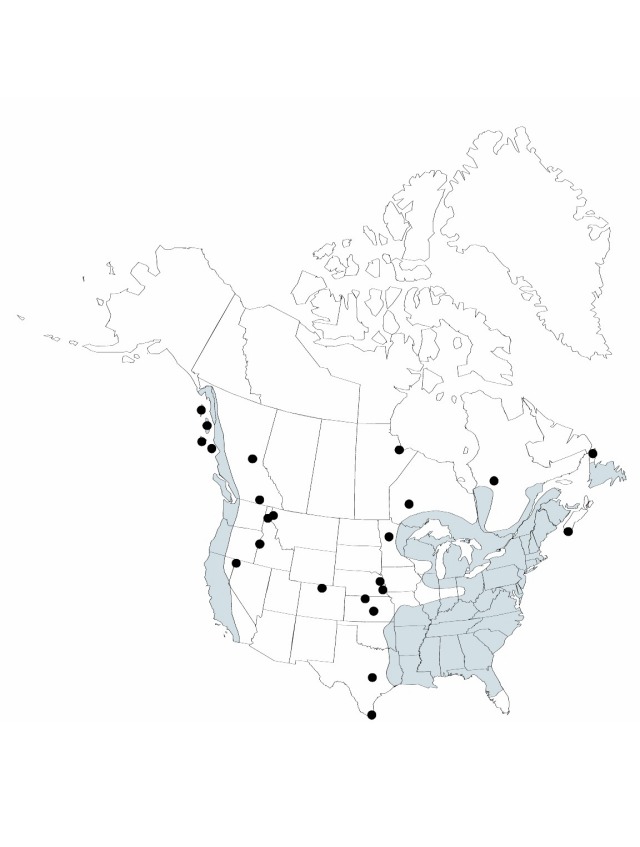Difference between revisions of "Juncus effusus"
Sp. Pl. 1: 326. 1753.
imported>Volume Importer |
imported>Volume Importer |
||
| Line 115: | Line 115: | ||
|publication year=1753 | |publication year=1753 | ||
|special status=Weedy;Illustrated;Endemic | |special status=Weedy;Illustrated;Endemic | ||
| − | |source xml=https:// | + | |source xml=https://bitbucket.org/aafc-mbb/fna-data-curation/src/2e0870ddd59836b60bcf96646a41e87ea5a5943a/coarse_grained_fna_xml/V22/V22_100.xml |
|genus=Juncus | |genus=Juncus | ||
|subgenus=Juncus subg. Genuini | |subgenus=Juncus subg. Genuini | ||
Revision as of 20:29, 5 November 2020
Herbs, perennial, 4–13 dm. Rhizomes short -branched, forming distinct, often large clumps. Culms erect, terete, 1–2.5 mm diam. at top of sheaths. Cataphylls several. Leaves: blade absent. Inflorescences lateral, compound dichasia, many flowered; primary bract erect, terete, extending well beyond dichasium. Flowers: tepals tan or darker, usually with greenish midstripe, lanceolate, 1.9–3.5 mm; inner slightly shorter; stamens 3, filaments 0.5–0.8 mm, anthers 0.5–0.8 mm; style 0.2 mm. Capsules greenish tan or darker, 3-locular, broadly ellipsoid to oblate, 1.5–3.2 mm. Seeds amber, (0.3–)0.4–0.5 mm. 2n = 40, 42.
Phenology: Flowering summer, fruiting summer–fall.
Habitat: Swamps and their edges, marshes, moist meadows, and moist or saturated soils, often conspicuous in pasture meadows where it is shunned by grazing animals
Elevation: Habitat??; 0–2500 m
Distribution

B.C., Man., N.B., Nfld. and Labr. (Nfld.), N.S., Ont., P.E.I., Que., Ala., Alaska, Ariz., Ark., Calif., Colo., Conn., Del., D.C., Fla., Ga., Idaho, Ill., Ind., Iowa, Kans., Ky., La., Maine, Md., Mass., Mich., Minn., Miss., Mo., Mont., Nebr., Nev., N.H., N.J., N.Y., N.C., Ohio, Okla., Oreg., Pa., R.I., S.C., Tenn., Tex., Vt., Va., W.Va., Wash., W.Va., Wis.
Discussion
The Juncus effusus complex has been variously recognized as containing several species or a single species with numerous infraspecific taxa. Unfortunately, North American treatments have dealt primarily with taxa in either the eastern or western portions of the continent. In considering the continent as a whole, little sense can be made of these treatments. The North American J. effusus complex is one that is in obvious need of modern systematic scrutiny.
